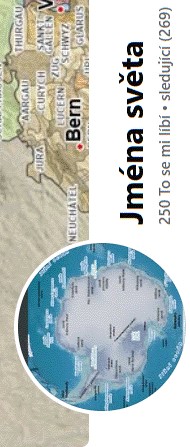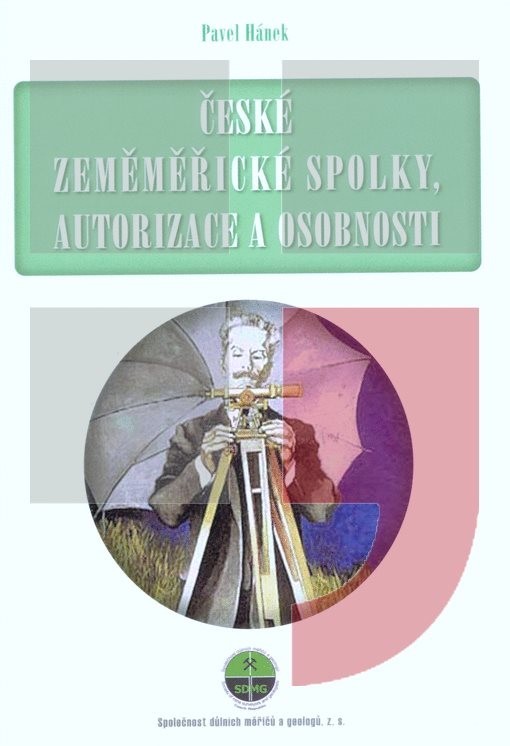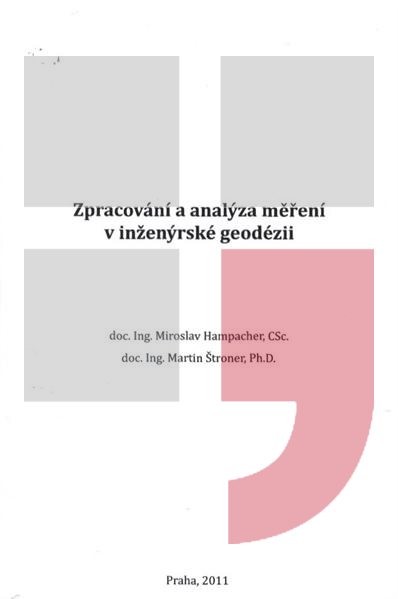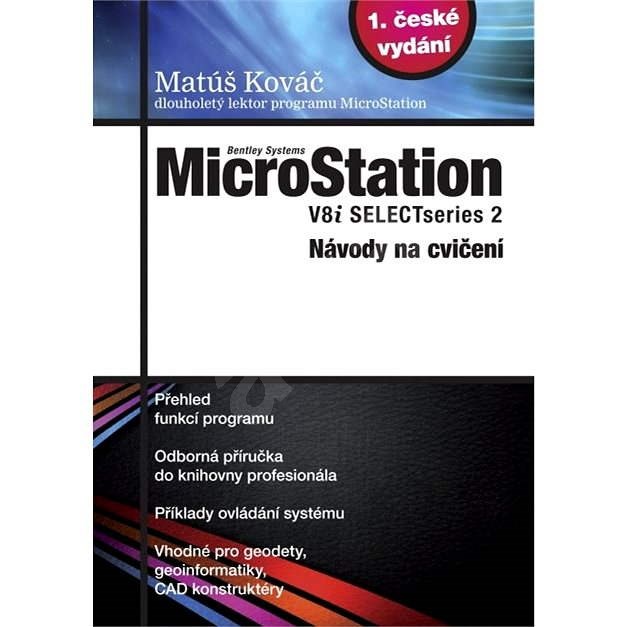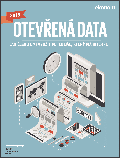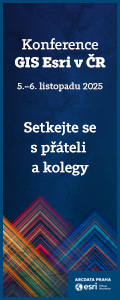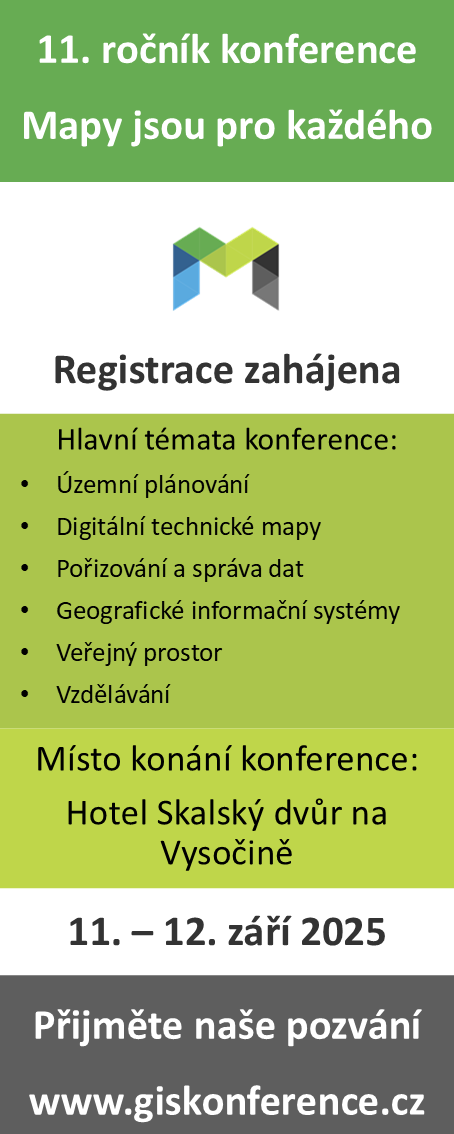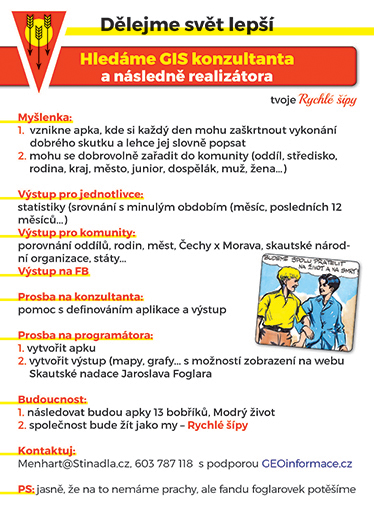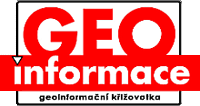zprávy
zdroje zpráv:Oznámení o vyhlášení výběrového řízení na služební místo odborný referent – obnova katastrálního ope
23.9.2015 13:00 ČÚZK - volná místa /Urady/Katastralni-urady/Katastralni-urady/Katastralni-urad-pro-Plzensky-kraj/Uredni-deska/Oznameni-a-jina-uredni-sdeleni/Volna-mista/Oznameni-o-vyhlaseni-vyberoveho-rizeni-na-sluz-(4)Oznámení o vyhlášení výběrového řízení na služební místo odborný referent – obnova katastrálního ope
23.9.2015 13:00 ČÚZK - předpisy a opatření /Urady/Katastralni-urady/Katastralni-urady/Katastralni-urad-pro-Plzensky-kraj/Uredni-deska/Oznameni-a-jina-uredni-sdeleni/Volna-mista/Oznameni-o-vyhlaseni-vyberoveho-rizeni-na-sluz-(4)Noc vědců a geoinformatika
23.9.2015 12:33 Katedra geoinformatiky UP Olomouc Katedra geoinformatiky se bude prezentovat v rámci Noci vědců dne 25. 9. 2015 (18-24 hod.) na dvou místech:1. Nová budova PřF - 3D tisk, eye-tracking, mobilní aplikace Botanická zahrada a atlasová tvorba,
2. Botanická zahrada PřF UP - nočn
Světový kosmický týden 2015
23.9.2015 10:32 Česká kosmická kancelářTýden věnovaný celosvětové propagaci a popularizaci kosmonautiky se uskuteční od 4. do 10. října. Česká kosmická kancelář zve všechny zájemce k organizaci, nebo k návštěvě, akcí na hvězdárnách nebo klubech kdekoliv v České republice.
Koho uslyšíte na konferenci?
23.9.2015 10:22 ARCDATA Konference GIS Esri v ČR se pomalu blíží, a proto jsme zveřejnili první informace o jejím programu.Vývojáři, přihlaste své aplikace do soutěže Společně otevíráme data
23.9.2015 8:30 GISportal.cz Fond Otakara Motejla vyhlašuje třetí ročník soutěže, která oceňuje nejlepší aplikace postavené na otevřených datech. Smyslem soutěže je podpořit vznik nových služeb pro veřejnost a zviditelnit společenský a ekonomický potenciál otevřených dat. Autoři mohou hlásit ...O Upvisionu a dalších 3 firmách z Geodisu v Hospodářských novinách
23.9.2015 7:53 UpVision O čtyřech úspěšných firmách, které vznikly z Geodisu, včetně nás, detailně ve včerejších Hospodářských novinách...http://archiv.ihned.cz/c1-64633590-tvurce-map-geodis-je-v-konkurzu-byvali-zamestnanci-ale-pracuji-s-mapami-dal
HN píší CleverMaps
22.9.2015 20:26Dnes vyšel v Hospodářských novinách další z článků o byznysu CleverMaps. Více je k dispozici ZDE

Čtvrteční ZINFO pro obě skupiny!
22.9.2015 18:40 Katedra geoinformatiky UP Olomouc Prosím VŠECHNY studenty zapsané do předmětu ZINFO (Základy informatiky), bez ohledu na to jestli mají v rozvrhu lichý nebo sudý týden, aby POVINNĚ zítra přišli na cvičení 14.00-15.45.Dejte si to prosím vědět mezi sebou
ČGS – pozvánka na přednášku (Blok expertů ESUR)
22.9.2015 17:59 Katedra geografie UP Olomouc Zveme Vás na přednášku v rámci Bloku expertů ESUR3+1 pilíř udržitelného rozvoje
aneb o udržitelnosti environmentálního optimismu alias mušketýři taky byli nakonec čtyři
která se uskuteční ve středu 30. září 2015 od 15.00 do 16.30 na učebně LP 5007 Přírodovědecké fakulty UP. Přednáší PhDr. Ivan Rynda (pozvánka).
Dodatečné výběrové řízení ERASMUS+ na LS 2016
22.9.2015 17:54 Katedra geografie UP Olomouc Vzhledem k tomu, že se uvolnila místa na studijní pobyty v rámci programu Erasmus+ na LS 2016, nabízíme možnost výjezdu studentů do neobsazených destinací. Jedná se o univerzity, s nimiž má naše pracoviště uzavřenu bilaterální smlouvu. Obsazeny jsou tyto destinace: Lublaň a Maribor (Slovinsko) - vše, Poznaň (Polsko) - 1 místo, Fatih Univ. Istanbul - 1 místo. Na ostatní univerzity se lze hlásit. Přihlášky odevzdejte do středy 7. října 2015 do 14.00 paní V. Háblové na sekretariát katedry geografie. Výběrové řízení se bude konat v pátek 9. října 2015 od 9.30 v místnosti LP-2027. Informace o programu Erasmus+ včetně přihlášky a seznamu univerzit jsou uveřejněny v sekci Studium > Mobility > Erasmus+What hAPPened?
22.9.2015 14:20 ESA Observing the Earth
Using satellites to predict plant and crop diseases is just one of the fresh ideas produced over a week-long camp dedicated to creating mobile apps using Earth observation data.
Noc vědců a geoinformatika
22.9.2015 12:53 Katedra geoinformatiky UP Olomouc Katedra geoinformatiky se bude prezentovat v rámci Noci vědců dne 25. 9. 2015 (16-24 hod.) na dvou místech:1. Nová budova PřF - 3D tisk, eye-tracking, mobilní aplikace Botanická zahrada a atlasová tvorba,
2. Botanická zahrada PřF UP - nočn
Program ESA Neosat pokročil do fáze vývoje
22.9.2015 8:27 Český Kosmický PortálESA a firma Thales Alenia Space podepsaly kontrakt na plný vývoj a kvalifikaci nové řady družicových platforem pojmenovaných Spacebus Neo.
Program ESA Neosat pokročil do fáze vývoje
22.9.2015 8:27 Český Kosmický PortálESA a firma Thales Alenia Space podepsaly kontrakt na plný vývoj a kvalifikaci nové řady družicových platforem pojmenovaných Spacebus Neo.
Navod_pro_spravu_geodetickych_zakladu_151086722 (1)
22.9.2015 8:24 ČÚZK - předpisy a opatření /Predpisy/Resortni-predpisy-a-opatreni/Navody-CUZK/Navod_pro_spravu_geodetickych_zakladu_151086722-(1Navod_pro_spravu_geodetickych_zakladu_151086722
22.9.2015 8:23 ČÚZK - předpisy a opatření /Predpisy/Resortni-predpisy-a-opatreni/Navody-CUZK/Navod_pro_spravu_geodetickych_zakladu_151086722INSPIRE téma Adresy (AD)
22.9.2015 2:00 Cenia - Katalog metadat ČR - INSPIRE Data odpovídají směrnici INSPIRE pro téma adresy (AD). Vychází především z projektu RÚIAN (Registr územní identifikace, adres a nemovitostí), který je součástí základních registrů České Republiky a obsahuje informace o územní identifikaci, adresách a nemovitostech. Data publikovaná v rámci INSPIRE obsahují pouze adresní místa a jejich komponenty, kterými jsou stát, obec, část obce, městský obvod v Praze (MOP), městký obvod/městská část (MO/MČ), ulice a pošta a to na území celé České Republiky. Obsahují rozvněž geometrii, která určuje definiční bod adresního místa. V datové sadě nění uvedeno 3,31%, t.j. 95881 adresních míst (k 21. 09. 2015), protože neobsahují definiční bod, podle kterého by je bylo možné prostorově určit. Více v zákoně č. 111/2009 Sb., o základních registrech a ve vyhlášce č. 359/2011 Sb., o základním registru územní identifikace, adres a nemovitostí v platných zněních a INSPIRE Data Specification on Addresses v 3.0.1 z 26.4.2010.INSPIRE téma Parcely (CP)
22.9.2015 2:00 Cenia - Katalog metadat ČR - INSPIRE Data odpovídají směrnici INSPIRE pro téma katastrální parcely (CP). Vychází z katastrální mapy, která je závazným státním mapovým dílem velkého měřítka, obsahuje body polohového bodového pole, polohopis a popis a může mít formu digitální mapy, analogové mapy nebo digitalizované mapy. Data publikovaná v rámci INSPIRE obsahují pouze katastrální území (pro celou Českou Republiku) a parcely a jejich hranice z území, kde je digitální mapa (k 21. 09. 2015 je to 78,01% území České republiky, t.j. 61 522,12km2). Více katastrální zákon 256/2013 Sb., katastrální vyhláška č.357/2013 Sb. v platném znění a INSPIRE Data Specification on Cadastral Parcels v 3.0.1.Quake on the radar
21.9.2015 14:38 ESA Observing the Earth
The combination of two Sentinel-1A radar scans shows how the ground shifted as a result of Chile’s 16 September earthquake
Dodatečné výběrové řízení ERASMUS+ na LS 2016
21.9.2015 10:03 Katedra geografie UP Olomouc Vzhledem k tomu, že se uvolnila místa na studijní pobyty v rámci programu Erasmus+ na LS 2016, nabízíme možnost výjezdu studentů do neobsazených destinací. Jedná se o univerzity, s nimiž má naše pracoviště uzavřenu bilaterální smlouvu. Obsazeny jsou tyto destinace: Lublaň a Maribor (Slovinsko) - vše, Poznaň (Polsko) - 1 místo, Fatih Univ. Istanbul - 1 místo. Na ostatní univerzity se lze hlásit. Přihlášky odevzdejte do středy 7.10. 14:00 paní V. Háblové na sekretariát katedry geografie. Výběrové řízení se bude konat v pátek 9.10. od 9:30 v místnosti LP-2027. Informace o programu Erasmus+ včetně přihlášky a seznamu univerzit jsou uveřejněny na webu katedry: geography.upol.cz/erasmusPrůlety na jižním pólem Marsu
21.9.2015 8:24 Český Kosmický PortálNeobvyklá pozorování uskutečněná sondou Mars Express ukazují překrásné pohledy na jižní polární čepičku planety Mars a starobylou krátery posetou vysočinu.
Pravidla Rugby na ČT Sport s našimi záběry
21.9.2015 8:23 UpVision Na ČT Sport jsou postupně představovány pravidla Rugby s našimi záběry.Zde příklady:
http://www.ceskatelevize.cz/sport/ms-v-ragby/momenty-sestrihy-reportaze-rozhovory/321125-poznavame-ragby-aut/
http://www.ceskatelevize.cz/sport/ms-v-ragby/momenty-sestrihy-reportaze-rozhovory/321194-poznavame-ragby-mlyn/
Odvolání výuky KGG/GESL 22. 9. 2015
21.9.2015 6:34 Katedra geografie UP Olomouc Z důvodu služební cesty vyučujícího se nebude konat výuka předmětu KGG/GESL dne 22. 9. 2015. Výuka ostatních předmětů (KGG/PID a KGG/SESL) proběhne standardně podle rozvrhu.Intergraph Acquires Intellectual Property Rights to New Zealand Police OnDuty Mobile Application
21.9.2015 2:00 Hexagon Safety & InfrastructureIntergraph has acquired the Intellectual Property rights to OnDuty, a new suite of mobile applications developed in collaboration with New Zealand Police. Under this first-of-its-kind agreement for New Zealand Police, Intergraph Security, Government & Infrastructure (SG&I) will further develop and take to market the OnDuty suite to public safety agencies beyond New Zealand. Once commercialized, New Zealand Police would receive royalties for further technology investment and innovation.
"This agreement is a natural extension of our decades-long partnership and commitment to New Zealand Police, one of the most advanced public safety and security agencies in the world," said Steven Cost, president of Intergraph SG&I, who participated in a signing ceremony at police headquarters in Wellington with Police Commissioner Mike Bush. "The agreement aligns with our global strategy to help advance emergency services' productivity through mobility. We are excited to help take New Zealand Police's world-class technology to the next level."
OnDuty is expected to help streamline workflow and reporting, and provide greater collaboration, thereby optimizing police time and productivity. It is designed to provide unified access to information from various police systems. OnDuty allows officers to easily receive alerts, view information, update statuses, complete paperwork and attach multimedia files from their mobile devices in the field without having to return to station. Any new jobs created or new information added to existing jobs will be instantly accessible and visible to other team members. The first release of OnDuty is scheduled for November 2015, with more tasking functionalities planned over the next 12 months.
"The global reach of an organization such as Intergraph will ensure the best possible exposure for the intellectual property developed in collaboration with New Zealand Police," said Commissioner Bush. "We expect that agreements such as this will prove to be a fundamental building block to the further success of our Policing Excellence strategy."
OnDuty was developed under the Innovation through Mobility program, a vital part of New Zealand Police's proactive Policing Excellence strategy. The prototype was created in the police Mobile Innovation Lab and Experience Centre, whose aim is to drive collective innovation among New Zealand Police and its strategic partners, including Intergraph, and the rapid deployment of technologies to benefit day-to-day operational policing.
A long-time Intergraph customer, New Zealand Police utilize a suite of integrated solutions, including Intergraph's industry-leading computer-aided dispatch system, I/CAD, and its Mobile Responder app, which has been deployed on more than 10,000 police smartphones and tablets. The global leader in public safety and security solutions, Intergraph helps protect 1 in 12 people worldwide. Intergraph solutions increase public safety and security performance and productivity, while reducing the total cost of ownership for mission-critical IT investments.
GeoPub - Publikační činnost ČGS
21.9.2015 2:00 Cenia - Katalog metadat ČR - INSPIRE Databáze publikační činnosti ČGS - GeoPub. V databázi GeoPub jsou shromážděny citace publikací a dalších produktů činnosti pracovníků České geologické služby.Intergraph Acquires Intellectual Property Rights to New Zealand Police OnDuty Mobile Application
21.9.2015 2:00 Hexagon Safety & InfrastructureIntergraph has acquired the Intellectual Property rights to OnDuty, a new suite of mobile applications developed in collaboration with New Zealand Police. Under this first-of-its-kind agreement for New Zealand Police, Intergraph Security, Government & Infrastructure (SG&I) will further develop and take to market the OnDuty suite to public safety agencies beyond New Zealand. Once commercialized, New Zealand Police would receive royalties for further technology investment and innovation.
"This agreement is a natural extension of our decades-long partnership and commitment to New Zealand Police, one of the most advanced public safety and security agencies in the world," said Steven Cost, president of Intergraph SG&I, who participated in a signing ceremony at police headquarters in Wellington with Police Commissioner Mike Bush. "The agreement aligns with our global strategy to help advance emergency services' productivity through mobility. We are excited to help take New Zealand Police's world-class technology to the next level."
OnDuty is expected to help streamline workflow and reporting, and provide greater collaboration, thereby optimizing police time and productivity. It is designed to provide unified access to information from various police systems. OnDuty allows officers to easily receive alerts, view information, update statuses, complete paperwork and attach multimedia files from their mobile devices in the field without having to return to station. Any new jobs created or new information added to existing jobs will be instantly accessible and visible to other team members. The first release of OnDuty is scheduled for November 2015, with more tasking functionalities planned over the next 12 months.
"The global reach of an organization such as Intergraph will ensure the best possible exposure for the intellectual property developed in collaboration with New Zealand Police," said Commissioner Bush. "We expect that agreements such as this will prove to be a fundamental building block to the further success of our Policing Excellence strategy."
OnDuty was developed under the Innovation through Mobility program, a vital part of New Zealand Police's proactive Policing Excellence strategy. The prototype was created in the police Mobile Innovation Lab and Experience Centre, whose aim is to drive collective innovation among New Zealand Police and its strategic partners, including Intergraph, and the rapid deployment of technologies to benefit day-to-day operational policing.
A long-time Intergraph customer, New Zealand Police utilize a suite of integrated solutions, including Intergraph's industry-leading computer-aided dispatch system, I/CAD, and its Mobile Responder app, which has been deployed on more than 10,000 police smartphones and tablets. The global leader in public safety and security solutions, Intergraph helps protect 1 in 12 people worldwide. Intergraph solutions increase public safety and security performance and productivity, while reducing the total cost of ownership for mission-critical IT investments.
Intergraph Acquires Intellectual Property Rights to New Zealand Police OnDuty Mobile Application
21.9.2015 2:00 Hexagon Safety & InfrastructureIntergraph has acquired the Intellectual Property rights to OnDuty, a new suite of mobile applications developed in collaboration with New Zealand Police. Under this first-of-its-kind agreement for New Zealand Police, Intergraph Security, Government & Infrastructure (SG&I) will further develop and take to market the OnDuty suite to public safety agencies beyond New Zealand. Once commercialized, New Zealand Police would receive royalties for further technology investment and innovation.
"This agreement is a natural extension of our decades-long partnership and commitment to New Zealand Police, one of the most advanced public safety and security agencies in the world," said Steven Cost, president of Intergraph SG&I, who participated in a signing ceremony at police headquarters in Wellington with Police Commissioner Mike Bush. "The agreement aligns with our global strategy to help advance emergency services' productivity through mobility. We are excited to help take New Zealand Police's world-class technology to the next level."
OnDuty is expected to help streamline workflow and reporting, and provide greater collaboration, thereby optimizing police time and productivity. It is designed to provide unified access to information from various police systems. OnDuty allows officers to easily receive alerts, view information, update statuses, complete paperwork and attach multimedia files from their mobile devices in the field without having to return to station. Any new jobs created or new information added to existing jobs will be instantly accessible and visible to other team members. The first release of OnDuty is scheduled for November 2015, with more tasking functionalities planned over the next 12 months.
"The global reach of an organization such as Intergraph will ensure the best possible exposure for the intellectual property developed in collaboration with New Zealand Police," said Commissioner Bush. "We expect that agreements such as this will prove to be a fundamental building block to the further success of our Policing Excellence strategy."
OnDuty was developed under the Innovation through Mobility program, a vital part of New Zealand Police's proactive Policing Excellence strategy. The prototype was created in the police Mobile Innovation Lab and Experience Centre, whose aim is to drive collective innovation among New Zealand Police and its strategic partners, including Intergraph, and the rapid deployment of technologies to benefit day-to-day operational policing.
A long-time Intergraph customer, New Zealand Police utilize a suite of integrated solutions, including Intergraph's industry-leading computer-aided dispatch system, I/CAD, and its Mobile Responder app, which has been deployed on more than 10,000 police smartphones and tablets. The global leader in public safety and security solutions, Intergraph helps protect 1 in 12 people worldwide. Intergraph solutions increase public safety and security performance and productivity, while reducing the total cost of ownership for mission-critical IT investments.
Upozornění k začátku výuky KGG/UGE
20.9.2015 10:39 Katedra geografie UP Olomouc Dne 21. září 2015 se z důvodu jiné akce v učebně LP 2001 nebude konat přednáška z předmětu KGG/UGE Úvod do studia geografie (doc. Toušek). Termín náhradní přednášky bude stanoven dodatečně v průběhu zimního semestru. Rovněž cvičení z tohoto předmětu budou probíhat až od následujícího pracovního pondělí 5. 10. 2015.Anketa pro zeměměřiče
19.9.2015 10:09 Zeměměřič Má dnes cenu měřením ověřovat dokumentaci skutečného provedení stavby při zpracování geometrického plánu pro zřízení práva odpovídající věcnému břemeni, kdy jste tuto DSPS nedělali sami, ale přebrali jste jen dokumentaci?Nezapomeňte zaregistrovat svůj Den GIS
18.9.2015 14:21 ARCDATA Připravujete workshop, přednášku nebo výstavu v rámci oslav Dne GIS. Dnes je poslední možnost, jak s registrací získat zajímavé dárky pro své účastníky.20150918 - Školící ISÚI
18.9.2015 14:06 ČÚZK /Uvod/Produkty-a-sluzby/RUIAN/RUIAN-novinky/20150918-Skolici-ISUI20150918 - Školící ISÚI
18.9.2015 14:06 ČÚZK - předpisy a opatření /Uvod/Produkty-a-sluzby/RUIAN/RUIAN-novinky/20150918-Skolici-ISUI20150918 - Problémy VFR
18.9.2015 13:06 ČÚZK - předpisy a opatření /Uvod/Produkty-a-sluzby/RUIAN/2-Poskytovani-udaju-RUIAN-ISUI-VDP/Vymenny-format-RUIAN/Archiv-novinek-VFR/20150918-Problemy-VFR20150918 - Problémy VFR
18.9.2015 13:06 ČÚZK /Uvod/Produkty-a-sluzby/RUIAN/2-Poskytovani-udaju-RUIAN-ISUI-VDP/Vymenny-format-RUIAN/Archiv-novinek-VFR/20150918-Problemy-VFRUpozornění uživatelům - výpadek telefonního spojení
18.9.2015 11:42 ČÚZK - předpisy a opatření /Urady/Katastralni-urady/Katastralni-urady/Katastralni-urad-pro-Olomoucky-kraj/Katastralni-pracoviste/KP-Prerov/O-uradu/Aktuality/Upozorneni-uzivatelum-vypadek-telefonniho-spojeniUpozornění uživatelům - výpadek telefonního spojení
18.9.2015 11:42 ČÚZK /Urady/Katastralni-urady/Katastralni-urady/Katastralni-urad-pro-Olomoucky-kraj/Katastralni-pracoviste/KP-Prerov/O-uradu/Aktuality/Upozorneni-uzivatelum-vypadek-telefonniho-spojeniMississippi swampland
18.9.2015 10:05 ESA Observing the Earth
Earth observation image of the week: a Sentinel-2 image of Mississippi's swamps, USA, also featured on the Earth from Space video programme
Pozvánka na vernisáž výstavy Znáte Prahu?
18.9.2015 7:00 Česká asociace pro geoinformace Institut plánování a rozvoje hlavního města Prahy Vás srdečně zve na zahájení výstavy Znáte Prahu? Město v mapách, grafech a číslech, které proběhne 30. září 2015 od 18 hodin v Sále architektů, Staroměstská radnice (4.patro),Kosmonaut Andreas Mogensen prezentoval z vesmíru misi AAUSAT5
18.9.2015 0:02 Český Kosmický PortálPřímo z paluby Mezinárodní kosmické stanice představil dánský kosmonaut Andreas Mogensen družici CubeSat AAUSAT5. Ta byla navržena a postavena studenty Aalborg University v Dánsku za podpory ESA. Družice má za úkol během své mise testovat studentské přijímače signálů s námořních lodí využívajících systém AIS (Automated Identification System) s novým komunikačním protokolem, který navrhli sami studenti.
Carlson SurveyGNSS 2016 introduced at Intergeo
17.9.2015 23:23 Carlson Software Featuring expanded networks & applicability plus improved performance MAYSVILLE, Kentucky, U.S.A. (September 2015)— Carlson SurveyGNSS, Carlson Software’s simple, yet powerful data post-processing software, just got better with the release of the 2016 version at Intergeo in Stuttgart, Germany, being held Sept. 15 to 17. Designed for surveyors and positioning professionals, Carlson SurveyGNSS post-processing software achieves high […]Hledá se šikovný pomvěd pro MONITOR
17.9.2015 16:57 Katedra geoinformatiky UP Olomouc Oblast výpomoci: zabezpečení provozu senzorovových přístrojů - kompletace systémů, instalace do terénu (v areálu PřF), aktualizace sw. rozhraní, provozní údržba.Nástup ihned, hlavní pracovní nasazení září/říjen. Technická zdatn
20150917Oznámení o vyhlášení výběrového řízení služebního místa odborný referent KP Benešov
17.9.2015 15:34 ČÚZK - předpisy a opatření /Urady/Katastralni-urady/Katastralni-urady/Katastralni-urad-pro-Stredocesky-kraj/Katastralni-pracoviste/KP-Benesov/O-uradu/Aktuality/20150901Oznameni-o-vyhlaseni-vyberoveho-rizeni-slureditel KP
17.9.2015 15:34 ČÚZK /Urady/Katastralni-urady/Katastralni-urady/Katastralni-urad-pro-Stredocesky-kraj/Katastralni-pracoviste/KP-Benesov/O-uradu/Aktuality/20150901Oznameni-o-vyhlaseni-vyberoveho-rizeni-slureditel KP
17.9.2015 15:34 ČÚZK - předpisy a opatření /Urady/Katastralni-urady/Katastralni-urady/Katastralni-urad-pro-Stredocesky-kraj/Katastralni-pracoviste/KP-Benesov/O-uradu/Aktuality/20150901Oznameni-o-vyhlaseni-vyberoveho-rizeni-slu20150917Oznámení o vyhlášení výběrového řízení služebního místa odborný referent KP Benešov
17.9.2015 15:34 ČÚZK /Urady/Katastralni-urady/Katastralni-urady/Katastralni-urad-pro-Stredocesky-kraj/Katastralni-pracoviste/KP-Benesov/O-uradu/Aktuality/20150901Oznameni-o-vyhlaseni-vyberoveho-rizeni-sluOdborný referent - referent katastru nemovitostí na Katastrálním pracovišti Benešov
17.9.2015 15:29 ČÚZK - volná místa /Urady/Katastralni-urady/Katastralni-urady/Katastralni-urad-pro-Stredocesky-kraj/Uredni-deska/Oznameni-a-jina-uredni-sdeleni/Volna-mista/Oznameni-o-vyhlaseni-vyberoveho-rizeni-na-sluzebniOznámení o vyhlášení výběrového řízení na služební místo odborný referent - referent katastru nemo
17.9.2015 15:29 ČÚZK /Urady/Katastralni-urady/Katastralni-urady/Katastralni-urad-pro-Stredocesky-kraj/Uredni-deska/Oznameni-a-jina-uredni-sdeleni/Volna-mista/Oznameni-o-vyhlaseni-vyberoveho-rizeni-na-sluzebniOdborný referent - referent katastru nemovitostí na Katastrálním pracovišti Benešov
17.9.2015 15:29 ČÚZK - předpisy a opatření /Urady/Katastralni-urady/Katastralni-urady/Katastralni-urad-pro-Stredocesky-kraj/Uredni-deska/Oznameni-a-jina-uredni-sdeleni/Volna-mista/Oznameni-o-vyhlaseni-vyberoveho-rizeni-na-sluzebniOznámení o vyhlášení výběrového řízení na služební místo odborný referent - referent katastru nemo
17.9.2015 15:29 ČÚZK - volná místa /Urady/Katastralni-urady/Katastralni-urady/Katastralni-urad-pro-Stredocesky-kraj/Uredni-deska/Oznameni-a-jina-uredni-sdeleni/Volna-mista/Oznameni-o-vyhlaseni-vyberoveho-rizeni-na-sluzebniOdborný referent - referent katastru nemovitostí na Katastrálním pracovišti Benešov
17.9.2015 15:29 ČÚZK /Urady/Katastralni-urady/Katastralni-urady/Katastralni-urad-pro-Stredocesky-kraj/Uredni-deska/Oznameni-a-jina-uredni-sdeleni/Volna-mista/Oznameni-o-vyhlaseni-vyberoveho-rizeni-na-sluzebniOznámení o vyhlášení výběrového řízení na služební místo odborný referent - referent katastru nemo
17.9.2015 15:29 ČÚZK - předpisy a opatření /Urady/Katastralni-urady/Katastralni-urady/Katastralni-urad-pro-Stredocesky-kraj/Uredni-deska/Oznameni-a-jina-uredni-sdeleni/Volna-mista/Oznameni-o-vyhlaseni-vyberoveho-rizeni-na-sluzebniPrihlasovani_do_skoliciho_ISUI_pres_JIP-20150917
17.9.2015 15:27 ČÚZK - předpisy a opatření /Uvod/Produkty-a-sluzby/RUIAN/Pristup-do-ISUI-VDP/Pristup-do-ISUI-VDP/Prihlasovani_do_skoliciho_ISUI_pres_JIP-20150917Earth Explorer UCM replay
17.9.2015 15:24 ESA Observing the Earth
Watch the replay of User Consultation Meeting in Poland where scientist met to discuss the merits of the CarbonSat and FLEX candidate missions before one is selected as ESA’s eighth Earth Explorer
Watch the replay
17.9.2015 15:24 ESA Observing the Earth
Watch the replay of User Consultation Meeting in Poland where scientist met to discuss the merits of the CarbonSat and FLEX candidate missions before one is selected as ESA’s eighth Earth Explorer
Přístup do ISÚI / VDP
17.9.2015 15:22 ČÚZK - předpisy a opatření /Uvod/Produkty-a-sluzby/RUIAN/Pristup-do-ISUI-VDP/Pristup-do-ISUI-VDPOznámení o vyhlášení výběrového řízení na služební místo ředitele technického odboru Katastrálního ú
17.9.2015 14:51 ČÚZK /Urady/Katastralni-urady/Katastralni-urady/Katastralni-urad-pro-Moravskoslezsky-kraj/Uredni-deska/Oznameni-a-jina-uredni-sdeleni/Volna-mista/Oznameni-o-vyhlaseni-vyberoveho-rizeni-na-sluz-(1)Oznámení o vyhlášení výběrového řízení na služební místo ředitele technického odboru Katastrálního ú
17.9.2015 14:51 ČÚZK - volná místa /Urady/Katastralni-urady/Katastralni-urady/Katastralni-urad-pro-Moravskoslezsky-kraj/Uredni-deska/Oznameni-a-jina-uredni-sdeleni/Volna-mista/Oznameni-o-vyhlaseni-vyberoveho-rizeni-na-sluz-(1)Oznámení o vyhlášení výběrového řízení na služební místo ředitele technického odboru Katastrálního ú
17.9.2015 14:51 ČÚZK - předpisy a opatření /Urady/Katastralni-urady/Katastralni-urady/Katastralni-urad-pro-Moravskoslezsky-kraj/Uredni-deska/Oznameni-a-jina-uredni-sdeleni/Volna-mista/Oznameni-o-vyhlaseni-vyberoveho-rizeni-na-sluz-(1)LADA NIVA
17.9.2015 14:09 ČÚZK - předpisy a opatření /Urady/Katastralni-urady/Katastralni-urady/Katastralni-urad-pro-Zlinsky-kraj/Nabidky-majetku/LADA-NIVALADA NIVA
17.9.2015 14:09 ČÚZK /Urady/Katastralni-urady/Katastralni-urady/Katastralni-urad-pro-Zlinsky-kraj/Nabidky-majetku/LADA-NIVAEarth from Space
17.9.2015 14:00 ESA Observing the Earth
Join us Friday, 18 September, at 10:00 CEST for the ‘Earth from Space’ video programme. This week features a Sentinel-2A image of the Mississippi swamp area, in the USA
HANDHELD Delivers Prototype and Valuable Experience
17.9.2015 10:47 European GNSS Agency
The EU-funded HANDHELD project produced an important new prototype device for the surveying and mapping sector, while building crucial know-how among companies that are keeping Europe competitive in the global GNSS marketplace.
EU-funded GNSS research can deliver benefits on multiple levels, including the development of immediately marketable products and services. But while not every research initiative ends in direct market success, the experience and know-how gained by project partners, especially in the private sector, can be equally impactful.
Watch This: EGNOS for Mapping
The HANDHELD prototype is a portable, stand-alone system with an innovative GNSS antenna, says project coordinator Alain Suskind of Septentrio. But it is only one of a number of solutions developed in recent years in the fast-moving and highly innovative surveying sector. Completed in 2013, the HANDHELD device immediately found itself in competition with other new devices carrying out the same functions, such as ‘ruggedised’ tablets.
“A working prototype was developed during the project,” says Suskind. “The research and subsequent know-how that we obtained can and is being used in our further product developments.”
Research Objectives Met
The central objective of the HANDHELD project was to develop a multi-frequency surveying device that can be held in one hand, leaving the other hand free to carry out other tasks. This included developing a small GNSS L1-E5 antenna suitable for integration in the device. The project team also developed and test an RF integrated passive device in order to reduce the footprint and cost of the antenna front-end.
“A multi-frequency, handheld device was successfully developed,” Suskind says. “The main innovation is the small-size, dual-frequency GNSS antenna, which has proven to work well.”
In the project’s final report, the HANDHELD team concluded that the GNSS antenna is “on the large and heavy side for an integrated solution” and urged that other integration solutions be investigated, such as a standalone housing of the antenna and GNSS receiver that communicates with the mobile device, preferably wirelessly.
“The project and our partners learned a lot about the market and user aspects of handheld devices, especially the ergonomic aspects of such products,” says Suskind. Partners included IMEC, IPDiA and Blackroc Technology, all companies that are helping Europe make its mark in the fast-moving world of GNSS mobile devices.
Taking the Work Forward
HANDHELD pointed towards some specific areas for further research. For example, the final report suggested that the development of an independent hardware platform along with html-based application software could be very useful in the drive towards more portable GNSS-based surveying tools. Further research and development could focus on stand-alone housing shape and interfaces, wireless communication means, such as Wi-Fi and Bluetooth, and application software.
According to the GSA’s 2015 GNSS Market Report, surveying represents the most demanding market segment in terms of accuracy. Furthermore, thanks to high purchasing power, it is an early adopter of technological innovation. Once new equipment costs decrease, other sectors tend to follow in adopting new features already tested in the surveying sector.
Projects such as HANDHELD demonstrate the ability of European companies to carry out successful, high-level GNSS research in this cutting-edge sector, building valuable experience and pointing the way towards new and potentially lucrative areas for further work.
More Information
Media note: This feature can be republished without charge provided the European GNSS Agency (GSA) is acknowledged as the source at the top or the bottom of the story. You must request permission before you use any of the photographs on the site. If you republish, we would be grateful if you could link back to the GSA website (http://www.gsa.europa.eu).

Oznámení o vyhlášení výběrového řízení na služební místo rada – rozhodování o povolení vkladu
17.9.2015 9:35 ČÚZK - předpisy a opatření /Urady/Katastralni-urady/Katastralni-urady/Katastralni-urad-pro-Plzensky-kraj/Uredni-deska/Oznameni-a-jina-uredni-sdeleni/Volna-mista/Oznameni-o-vyhlaseni-vyberoveho-rizeni-na-sluz-(3)Oznámení o vyhlášení výběrového řízení na služební místo rada – rozhodování o povolení vkladu
17.9.2015 9:35 ČÚZK /Urady/Katastralni-urady/Katastralni-urady/Katastralni-urad-pro-Plzensky-kraj/Uredni-deska/Oznameni-a-jina-uredni-sdeleni/Volna-mista/Oznameni-o-vyhlaseni-vyberoveho-rizeni-na-sluz-(3)Oznámení o vyhlášení výběrového řízení na služební místo rada – rozhodování o povolení vkladu
17.9.2015 9:35 ČÚZK - volná místa /Urady/Katastralni-urady/Katastralni-urady/Katastralni-urad-pro-Plzensky-kraj/Uredni-deska/Oznameni-a-jina-uredni-sdeleni/Volna-mista/Oznameni-o-vyhlaseni-vyberoveho-rizeni-na-sluz-(3)Oznámení o vyhlášení výběrového řízení na služební místo vedoucí oddělení aktualizace a dokumentace
17.9.2015 9:33 ČÚZK /Urady/Katastralni-urady/Katastralni-urady/Katastralni-urad-pro-Plzensky-kraj/Uredni-deska/Oznameni-a-jina-uredni-sdeleni/Volna-mista/Oznameni-o-vyhlaseni-vyberoveho-rizeni-na-sluz-(2)Oznámení o vyhlášení výběrového řízení na služební místo vedoucí oddělení aktualizace a dokumentace
17.9.2015 9:33 ČÚZK - volná místa /Urady/Katastralni-urady/Katastralni-urady/Katastralni-urad-pro-Plzensky-kraj/Uredni-deska/Oznameni-a-jina-uredni-sdeleni/Volna-mista/Oznameni-o-vyhlaseni-vyberoveho-rizeni-na-sluz-(2)Oznámení o vyhlášení výběrového řízení na služební místo vedoucí oddělení aktualizace a dokumentace
17.9.2015 9:33 ČÚZK - předpisy a opatření /Urady/Katastralni-urady/Katastralni-urady/Katastralni-urad-pro-Plzensky-kraj/Uredni-deska/Oznameni-a-jina-uredni-sdeleni/Volna-mista/Oznameni-o-vyhlaseni-vyberoveho-rizeni-na-sluz-(2)Oznámení o vyhlášení výběrového řízení na služební místo ředitele odboru – vedoucí kanceláře Katastr
17.9.2015 8:37 ČÚZK /Urady/Katastralni-urady/Katastralni-urady/Katastralni-urad-pro-Moravskoslezsky-kraj/Uredni-deska/Oznameni-a-jina-uredni-sdeleni/Volna-mista/Oznameni-o-vyhlaseni-vyberoveho-rizeni-na-sluzebniOznámení o vyhlášení výběrového řízení na služební místo ředitele odboru – vedoucí kanceláře Katastr
17.9.2015 8:37 ČÚZK - předpisy a opatření /Urady/Katastralni-urady/Katastralni-urady/Katastralni-urad-pro-Moravskoslezsky-kraj/Uredni-deska/Oznameni-a-jina-uredni-sdeleni/Volna-mista/Oznameni-o-vyhlaseni-vyberoveho-rizeni-na-sluzebniOznámení o vyhlášení výběrového řízení na služební místo ředitele odboru – vedoucí kanceláře Katastr
17.9.2015 8:37 ČÚZK - volná místa /Urady/Katastralni-urady/Katastralni-urady/Katastralni-urad-pro-Moravskoslezsky-kraj/Uredni-deska/Oznameni-a-jina-uredni-sdeleni/Volna-mista/Oznameni-o-vyhlaseni-vyberoveho-rizeni-na-sluzebnipřerušení dodávky el. energie
17.9.2015 7:27 ČÚZK /Urady/Katastralni-urady/Katastralni-urady/Katastralni-urad-pro-Zlinsky-kraj/Katastralni-pracoviste/KP-Uher-Brod/O-uradu/Aktuality/preruseni-dodavky-el-energiepřerušení dodávky el. energie
17.9.2015 7:27 ČÚZK - předpisy a opatření /Urady/Katastralni-urady/Katastralni-urady/Katastralni-urad-pro-Zlinsky-kraj/Katastralni-pracoviste/KP-Uher-Brod/O-uradu/Aktuality/preruseni-dodavky-el-energieJakub mezi hlavními hosty konference GI2015 v Drážďanech
17.9.2015 4:02 UpVision Tento týden měl Jakub přednášku v Německu v Drážďanech na konferenci GI2015 na téma využití UAS v životním prostředí, kde byl pozván jako jeden z hlavních hostů a řečníků.Více zde:
http://gdi-sn.blogspot.cz/
Geologický slovník, vícejazyčný
17.9.2015 2:00 Cenia - Katalog metadat ČR - INSPIRE Multilingual Geological Thesaurus - vícejazyčný slovník jako nástroj pro překlad signálních a detailních geologických dat z databází vrtůSlovník obsahuje překlady kódovaných položek jak vrtných metadat (signální informace o vrtech), tak i detailních intervalových dat (popisu jednotlivých vrstev geologického profilu) v sedmi jazycích zemí, zúčastněných v projektu e-Earth: angličtina, čeština, holandština, italština, litevština, němčina a polština.Slovník také obsahuje překlady kódovaných položek jak metadat hydrogeologických objektů (vrtů, studen a pramenů), tak i detailních intervalových dat (výsledků hydrodynamických a hydrochemických zkoušek) ve dvanácti jazycích zemí, zúčastněných v projektu e-Water : čeština, dánština, holandština, francouzština, němčina, maďarština, italština, litevština, slovenština, slovinština, španělština, švédština plus angličtina.Geologický slovník, anglicko-český a česko-anglický
17.9.2015 2:00 Cenia - Katalog metadat ČR - INSPIRE Databáze slovníku je elektronickou podobou geologického slovníku autorů Otakara Zemana, Karla Beneše a kolektivu vydaného v roce v roce 1985 nakladatelstvim Academia Praha. Některé chybějící termíny do slovníku doplnili: Zdeněk Kukal, Petr Hradecký, Vladislav Rapprich a Marcela Stárková.Katalog geohazardů
17.9.2015 2:00 Cenia - Katalog metadat ČR - INSPIRE Databáze Katalog geohazardů shromážďuje a poskytuje strukturované informace o potenciálně rizikových geofaktorech působících na území ČR, o nejdůležitějších relevantních datových zdrojích a odkazuje na příslušnou legislativu. Geohazardy jsou popsány a katalogizovány specialisty ČGS podle geovědních disciplín, původu a podmínek vzniku, geografického rozšíření, časového charakteru, souvisejících procesů, společenského vlivu a typu nebezpečí, metod monitoringu apod.Geoparky UNESCO
17.9.2015 2:00 Cenia - Katalog metadat ČR - INSPIRE Hranice mezinárodně významné části přírody pod patronací UNESCO (Global Geoparks) v České republice; vrstva obsahuje složené prvky (Multipart Features); © AOPK ČR, 2015Katalog publikací v knihovně ČGS
17.9.2015 2:00 Cenia - Katalog metadat ČR - INSPIRE Katalog publikací v knihovně ČGS zahrnuje informační bázi o knihovním fondu v rozsahu 170 000 knih, 46 českých a 171 zahraničních periodik (stav 1999). Přírůstky v letech 1919-1991 postihují lístkové katalogy, od roku 1992 databáze přírůstků knih a časopisů. Knihovna ČGS má informační gesci v oborech regionální geologie krystalinika, regionální geologie sedimentárních formací, aplikovaná geologie, geologie ložisek nerostných surovin, geochemie životního prostředí, databáze a GIS a služby dokumentační a ediční.Setkání vývojářů mobilních aplikací
17.9.2015 0:02 Český Kosmický PortálV pondělí 14. září začíná čtvrtý kemp ESA Space App Camp, kterého se zúčastní 23 profesionálních vývojářů aplikací z celé Evropy. Kemp probíhá ve středisku ESA ESRIN (European Space Research Institute) v italském Frascati.
START 2015
16.9.2015 17:47 Katedra geoinformatiky UP Olomouc V pondělí 21. září 2015 v 15:45 proběhne v aule PřF UP celogeoinformatické zahájení akademického roku 2015-2016. Budou zde přítomni všichni vyučující i studenti všech ročníků. Prváci se dozví nezbytné informace, bude představen haInformace pro občany
16.9.2015 16:08 ČÚZK - předpisy a opatření /Urady/Katastralni-urady/Katastralni-urady/Katastralni-urad-pro-hlavni-mesto-Prahu/O-uradu/Aktuality/Informace-pro-obcanyInformace pro občany
16.9.2015 16:08 ČÚZK /Urady/Katastralni-urady/Katastralni-urady/Katastralni-urad-pro-hlavni-mesto-Prahu/O-uradu/Aktuality/Informace-pro-obcany20150916-Nová verze RÚIAN 1.7
16.9.2015 14:33 ČÚZK - předpisy a opatření /Uvod/Produkty-a-sluzby/RUIAN/2-Poskytovani-udaju-RUIAN-ISUI-VDP/Vymenny-format-RUIAN/Archiv-novinek-VFR/Nova-verze-RUIAN-1-720150916-Nová verze RÚIAN 1.7
16.9.2015 14:33 ČÚZK /Uvod/Produkty-a-sluzby/RUIAN/2-Poskytovani-udaju-RUIAN-ISUI-VDP/Vymenny-format-RUIAN/Archiv-novinek-VFR/Nova-verze-RUIAN-1-7Nepotřebný majetek 9/2015
16.9.2015 14:21 ČÚZK /Urady/Katastralni-urady/Katastralni-urady/Katastralni-urad-pro-Ustecky-kraj/Nabidky-majetku/Nepotrebny-majetek-9-2015Nepotřebný majetek 9/2015
16.9.2015 14:21 ČÚZK - předpisy a opatření /Urady/Katastralni-urady/Katastralni-urady/Katastralni-urad-pro-Ustecky-kraj/Nabidky-majetku/Nepotrebny-majetek-9-2015Galileo update
16.9.2015 14:16 ESA Navigation
ESOC reports Europe's ninth and tenth Galileo satellites are performing 'beautifully' in orbit
Ve výdejním modulu je možné žá
16.9.2015 12:00 Jihočeský kraj Ve výdejním modulu je možné žádat o data z RÚIAN a to konkrétně o prvky územního členení, parcel, adresních bodů a stavebních objektů. Data jsou aktualizována denně.New Galileo Open Service Signal-In-Space Operational Status Definition Document Now Available
16.9.2015 11:09 European GNSS Agency New Galileo Open Service Signal-In-Space Operational Status Definition Document Now Available
New Galileo Open Service Signal-In-Space Operational Status Definition Document Now Available
The European Commission has just published the first version of the Galileo Open Service Signal-In-Space Operational Status Definition (OS SIS OSD) Document. The processing of Galileo Open Service signals and the use of Galileo Open Service relies on the publication of four Galileo documents. The first two documents are already published and consist of the Galileo OS Signal-In-Space Interface Control Document [OS SIS ICD, Issue 1.1] and the Galileo Ionospheric Correction Algorithm for Galileo Single Frequency Users [Ionospheric Correction Algorithm for Galileo Single Frequency Users, Issue 1.1, June 2015]. The third document is the Galileo OS Signal-In-Space Operational Status Definition. A public consultation for this document will be launched next week. The fourth document, to be published in the coming months, will be the Galileo OS Service Definition Document (OS SDD).
The OS SIS OSD document is available for download here.
Document Overview
The document is divided into three main sections:
- A comprehensive guide explaining how the status of the Galileo SIS is disseminated by the signal itself through specific data within the Navigation Message.
- Important considerations about the use of navigation parameters, recalling the reference for the ionospheric model used by Galileo.
- Additional considerations on the validity of navigation parameters.
Additional Information
The European Commission and the GSA are holding an open public consultation for the first version of the Galileo Open Service Signal-In-Space Operational Status Definition (OS SIS OSD) Document The public consultation will be accessible next week.
More Information
Media note: This feature can be republished without charge provided the European GNSS Agency (GSA) is acknowledged as the source at the top or the bottom of the story. You must request permission before you use any of the photographs on the site. If you republish, we would be grateful if you could link back to the GSA website (http://www.gsa.europa.eu).

Dva roky provozu Portálu územního plánování Olomouckého kraje
16.9.2015 8:37 GISportal.cz Olomoucký kraj již dva roky provozuje přístupové místo k datům územního plánování (www.uap.kr-olomoucky.cz). Veřejnosti poskytuje základní nahlížecí, vyhledávací a tiskové služby z databáze územního plánování Olomouckého kraje. Přes mapový portál jsou dostupné informace v podobě georeferencovaných rastrových obrazů koordinačního ...Geomatika v projektech 2015 - program
16.9.2015 7:00 Česká asociace pro geoinformace Tradiční podzimní konference Geomatika v projektech 2015, kterou pořádá oddělení geomatiky ze ZČU v Plzni, zná svůj program.Na akci, která proběhne ve dnech 7. a 8. října 2015, je stále ještě možné se přihlásit do konce tohoto
Registrujte se na letošní ročník konference Inspirujme se...
16.9.2015 7:00 Česká asociace pro geoinformace Letošní ročník konference Inspirujme se... proběhne ve dnech 24. a 25. listopadu v Bratislavě. Počet účastníků konference je limitován, proto neváhejte s registrací!Program letošního ročníku prochází významnou změnou. Organizátoři si dali za cíl představit INSPIRE, Copernicus a environmentální reporting jako tři spolu fungující systémy dodávající potřebné
Metadatový katalog ČGS
16.9.2015 2:00 Cenia - Katalog metadat ČR - INSPIRE Databáze Metadatový katalog ČGS slouží jako centrální sklad popisu jednotlivých databází, služeb a aplikací, které jsou ve správě CGS .Aktualizace základního mapování biotopů
16.9.2015 2:00 Cenia - Katalog metadat ČR - INSPIRE Aktualizace vrstvy segmentů biotopů a relačních databází (biotopy, taxony) v 12-letém cyklu; zahájení aktualizace v roce 2007, ve vrstvě a tabulkách jsou aktualizované a neaktualizované záznamy (pole ROK_AKT); klasifikace biotopů viz CHYTRÝ, M.; KUČERA, T.; KOČÍ, M. (eds.) et al. (2010). Katalog biotopů České republiky. 2.upr. a rozš.vyd. Praha: Agentura ochrany přírody a krajiny ČR. 445 s. ISBN 978-80-87457-03-0.; popis charakteristik biotopů a segmentů viz platná metodika mapování biotopů (Portál ISOP/Mapování biotopů); botanická nomenklatura převzata z Nálezové databáze OP (http://isop.nature.cz/redlist/v_nd_taxon_category.php); vrstva obsahuje jednoduché prvky (Singlepart Features), kardinalita vztahu tabulek je 1 : N; © AOPK ČR, 2015Data z mapování biotopů neposkytují vyčerpávající informaci o vegetaci, resp. biotopech daného území. Mapování biotopů je opakováno v 12-leté periodě, především efemérní biotopy tak může pominout. Je metodicky nastaveno na celostátní úrovni, v lokálním měřítku je pouze zjednodušeným podkladem. Pro detailnější informaci je třeba odborný průzkum či konzultace.A005-007 - Památková rezervace, Památková zóna , Krajinná památková zóna vč. OP- ÚAP 2014
16.9.2015 2:00 Cenia - Katalog metadat ČR - INSPIRE A005-Informace o jevu PAMÁTKOVÁ REZERVACE VČ. OP ve správním obvodu ORP Moravské Budějovice dle zákona č.183/2006 Sb. dle zákona č. 183/2006 Sb. A006-Informace o jevu PAMÁTKOVÁ ZÓNA VČ. OP ve správním obvodu ORP Moravské Budějovice dle zákona č.183/2006 Sb. dle zákona č. 183/2006 Sb. A007- KRAJINNÁ PAMÁTKOVÁ ZÓNA VČ. OP ve správním obvodu ORP Moravské Budějovice dle zákona č.183/2006 Sb. dle zákona č. 183/2006 Sb. - jev se nevyskytujePřírodní biotopy (aktualizace základního mapování biotopů)
16.9.2015 2:00 Cenia - Katalog metadat ČR - INSPIRE Hranice segmentů přírodních biotopů a relační databáze jejich charakteristik z aktualizace základního mapování biotopů; klasifikace biotopů viz CHYTRÝ, M.; KUČERA, T.; KOČÍ, M. (eds.) et al. (2010). Katalog biotopů České republiky. 2.upr. a rozš.vyd. Praha: Agentura ochrany přírody a krajiny ČR. 445 s. ISBN 978-80-87457-03-0.; popis charakteristik biotopů a segmentů viz platná metodika mapování biotopů (Portál ISOP/Mapování biotopů); vrstva obsahuje jednoduché prvky (Singlepart Features), kardinalita vztahu mezi záznamy v tabulkách 1 : N; © AOPK ČR, 2015Formační skupiny přírodních biotopů
16.9.2015 2:00 Cenia - Katalog metadat ČR - INSPIRE Zastoupení formačních skupin přírodních biotopů na území ČR (přehled formačních skupin viz CHYTRÝ, M.; KUČERA, T.; KOČÍ, M. (eds.) et al. (2010). Katalog biotopů České republiky. 2. upr. a rozš. vyd. Praha: Agentura ochrany přírody a krajiny ČR. 445 s. ISBN 978-80-87457-03-0.); vrstva obsahuje jednoduché prvky (Singlepart Features); © AOPK ČR, 2015Habitaty (aktualizace základního mapování biotopů)
16.9.2015 2:00 Cenia - Katalog metadat ČR - INSPIRE Hranice segmentů habitatů a relační databáze jejich charakteristik z aktualizace základního mapování biotopů; převodní tabulka habitatů viz CHYTRÝ, M.; KUČERA, T.; KOČÍ, M. (eds.) et al. (2010). Katalog biotopů České republiky. 2.upr. a rozš.vyd. Praha: Agentura ochrany přírody a krajiny ČR. 445 s. ISBN 978-80-87457-03-0.; vrstva obsahuje jednoduché prvky (Singlepart Features), kardinalita vztahu mezi záznamy v tabulkách 1 : N; © AOPK ČR, 2015Data z mapování biotopů neposkytují vyčerpávající informaci o vegetaci, resp. biotopech daného území. Mapování biotopů je opakováno v 12-leté periodě, především efemérní biotopy tak může pominout. Je metodicky nastaveno na celostátní úrovni, v lokálním měřítku je pouze zjednodušeným podkladem. Pro detailnější informaci je třeba odborný průzkum či konzultace.Počet družic Galileo na oběžné dráze dosáhl deseti
16.9.2015 0:02 Český Kosmický PortálVlastní evropský družicový navigační systém se opět o krok přiblížil svému dokončení poté, co se družice Galileo 9 a Galileo 10 vydaly společně do vesmíru v pátek 11. září ve 2:08 h GMT (4:08 středoevropského času, 23:08 času místního - ale ještě 10. září). Odstartovaly z evropského kosmodromu na palubě rakety Sojuz.
150911_ČÚZK_Obchodní_podmínky
15.9.2015 14:23 ČÚZK - předpisy a opatření /Katastr-nemovitosti/Poskytovani-udaju-z-KN/Platebni-portal/Obchodni-podminky/150911_CUZK_Obchodni_podminkyWebinar: Seznamte se s CONNECT Edition - Společné prostředí tvorby dat
15.9.2015 12:09 Zeměměřič Webinář proběhne v pátek 18. září 2015 v 10 hodin dopoledneWebinar: Seznamte se s CONNECT Edition - Společné prostředí tvorby dat
15.9.2015 12:09 Zeměměřič webinář proběhne v pátek 18. září 2015 v 10 hodin dopoledneKosmonaut Andreas Mogensen přistál zpět na Zemi po misi na ISS
15.9.2015 11:52 Český Kosmický PortálKosmonaut ESA Andreas Mogensen, velitel kosmické lodi Sojuz Gennadij Padalka a kazašský specialista Ajdyn Ajmbětov přistáli zpět na Zemi v sobotu 12. září v 0:51 h GMT (2:51 středoevropského času). Úspěšné přistání ve stepích Kazachstánu znamenalo završení jejich mise na Mezinárodní kosmickou stanici.
Kosmonaut Andreas Mogensen přistál zpět na Zemi po misi na ISS
15.9.2015 11:52 Český Kosmický PortálKosmonaut ESA Andreas Mogensen, velitel kosmické lodi Sojuz Gennadij Padalka a kazašský specialista Ajdyn Ajmbětov přistáli zpět na Zemi v sobotu 12. září v 0:51 h GMT (2:51 středoevropského času). Úspěšné přistání ve stepích Kazachstánu znamenalo završení jejich mise na Mezinárodní kosmickou stanici.
Nová cenová politika Google Maps API
15.9.2015 10:56 GISportal.cz Když Google v roce 2012 představil novou cenovou strategii pro své Maps API, mnozí tehdejší „geohráči“ začali přecházet na jiné platformy (např. Foursquare). V té době byl nachystán pro vývojáře balíček začínající na 10 tisících ...GIS v plánování měst a regionů (reportáž)
15.9.2015 10:10 GISportal.cz Ve čtvrtek 10. září 2015 se v prostorách pražské Vysoké školy regionálního rozvoje (VŠRR) konal první ročník konference GIS v plánování měst a regionů, který spolupořádala také Česká asociace pro geoinformace (CAGI). Cílem konference bylo představit několik ...Successful Galileo Launch Gives Space-Based Services a Boost
15.9.2015 9:27 European GNSS Agency
On September 10th two additional Galileo satellites (FOC-M3 and SAT 9-10) were successfully launched into orbit from the European Space Centre in Kourou, French Guiana. Speaking at the launch, GSA Executive Director Carlo des Dorides discussed how the GSA will help ensure these new satellites translate into valuable services for the end user.
“While this launch is an impressive accomplishment, in the end Galileo is about more than designing, manufacturing and launching satellites,” he said. “The ultimate objective is to translate satellite signals into valuable, reliable services for European citizens.”
Keeping the Focus on the User
The GSA was delegated the responsibility for the Galileo service provision by the European Commission. Within this role, the Agency is tasked with ensuring that the end user remains at the centre of Galileo. To achieve this, the GSA is in constant dialogue with user communities via a wide range of activities.
The Agency also works closely with chipset and receiver manufacturers to ensure all products are Galileo-capable and ready in time when Galileo is deployed. In terms of R&D, the Agency has and continues to support numerous GNSS projects via the Horizon 2020 and, previously, the FP7 funding programmes. Speaking of R&D, des Dorides noted the recently launched Fundamental Elements, which dedicates approximately EUR 100 million to R&D aimed at advancing European GNSS chipset and receiver technologies. Des Dorides noted that the service provision task will not be easy. “Other systems are already operational and, in particular GPS is a de facto standard,” he said. “Nevertheless, we are committed to making Galileo the world’s second GNSS reference system by 2020, this is our goal.”
The GSA approaches this challenge with a strong track record and experience from its work with EGNOS, where it has been responsible for the programme’s service provision for the past two years. During this time, the Agency has supported the uptake of EGNOS to benefits a wide range of users. Today over 150 airports have EGNOS-based approaches, EGNOS-based precision farming benefits over two-thirds of European tractors and EGNOS is the standard for mapping and surveying in Europe. In addition interest in EGNOS from areas such as maritime and rail is growing steadily which is a positive trend for EGNOS service provision.
Ensuring a Secure System
Along with Galileo service provision, the GSA is also charged with providing a secure system. In this role, the GSA supports the EU GNSS Security Accreditation Board as an independent body within the Agency. It also provides security oversight and requirements for the GSA infrastructure, coordinates the development, adoption and trials of the Public Regulated Services (PRS) by the Member States, and advises the European Commission on matters of security in relation to EU
GNSS programme contracts and related security risks.
Via the Galileo Security Monitoring Centre (GSMC), the GSA will also provide around-the-clock monitoring and security response to all EU GNSS programmes. In this role, it will also provide instructions to the Member States regarding the control and management of their PRS user segments.
A Big Step Forward
According to des Dorides, the September 10th launch represents another big step forward for space-based services in Europe. “Tonight the entire European space community takes pride in the successful addition of two more Galileo satellites to the constellation,” he said. “For the GSA, this launch brings us one step closer to providing valuable, highly-accurate, reliable and secure European satellite navigation services to the world.”
More Information
Media note: This feature can be republished without charge provided the European GNSS Agency (GSA) is acknowledged as the source at the top or the bottom of the story. You must request permission before you use any of the photographs on the site. If you republish, we would be grateful if you could link back to the GSA website (http://www.gsa.europa.eu).

Successful Galileo Launch Gives Space-Based Services a Boost
15.9.2015 9:27 European GNSS Agency Following the successful launch of two additional Galileo satellites, the European GNSS Agency (GSA) discusses how Galileo will deliver space-based services to European citizens.
Following the successful launch of two additional Galileo satellites, the European GNSS Agency (GSA) discusses how Galileo will deliver space-based services to European citizens.
On September 10th two additional Galileo satellites (FOC-M3 and SAT 9-10) were successfully launched into orbit from the European Space Centre in Kourou, French Guiana. Speaking at the launch, GSA Executive Director Carlo des Dorides discussed how the GSA will help ensure these new satellites translate into valuable services for the end user.
“While this launch is an impressive accomplishment, in the end Galileo is about more than designing, manufacturing and launching satellites,” he said. “The ultimate objective is to translate satellite signals into valuable, reliable services for European citizens.”
Keeping the Focus on the User
The GSA was delegated the responsibility for the Galileo service provision by the European Commission. Within this role, the Agency is tasked with ensuring that the end user remains at the centre of Galileo. To achieve this, the GSA is in constant dialogue with user communities via a wide range of activities.
The Agency also works closely with chipset and receiver manufacturers to ensure all products are Galileo-capable and ready in time when Galileo is deployed. In terms of R&D, the Agency has and continues to support numerous GNSS projects via the Horizon 2020 and, previously, the FP7 funding programmes. Speaking of R&D, des Dorides noted the recently launched Fundamental Elements, which dedicates approximately EUR 100 million to R&D aimed at advancing European GNSS chipset and receiver technologies. Des Dorides noted that the service provision task will not be easy. “Other systems are already operational and, in particular GPS is a de facto standard,” he said. “Nevertheless, we are committed to making Galileo the world’s second GNSS reference system by 2020, this is our goal.”
The GSA approaches this challenge with a strong track record and experience from its work with EGNOS, where it has been responsible for the programme’s service provision for the past two years. During this time, the Agency has supported the uptake of EGNOS to benefits a wide range of users. Today over 150 airports have EGNOS-based approaches, EGNOS-based precision farming benefits over two-thirds of European tractors and EGNOS is the standard for mapping and surveying in Europe. In addition interest in EGNOS from areas such as maritime and rail is growing steadily which is a positive trend for EGNOS service provision.
Ensuring a Secure System
Along with Galileo service provision, the GSA is also charged with providing a secure system. In this role, the GSA supports the EU GNSS Security Accreditation Board as an independent body within the Agency. It also provides security oversight and requirements for the GSA infrastructure, coordinates the development, adoption and trials of the Public Regulated Services (PRS) by the Member States, and advises the European Commission on matters of security in relation to EU
GNSS programme contracts and related security risks.
Via the Galileo Security Monitoring Centre (GSMC), the GSA will also provide around-the-clock monitoring and security response to all EU GNSS programmes. In this role, it will also provide instructions to the Member States regarding the control and management of their PRS user segments.
A Big Step Forward
According to des Dorides, the September 10th launch represents another big step forward for space-based services in Europe. “Tonight the entire European space community takes pride in the successful addition of two more Galileo satellites to the constellation,” he said. “For the GSA, this launch brings us one step closer to providing valuable, highly-accurate, reliable and secure European satellite navigations services to the world.”
More Information
Media note: This feature can be republished without charge provided the European GNSS Agency (GSA) is acknowledged as the source at the top or the bottom of the story. You must request permission before you use any of the photographs on the site. If you republish, we would be grateful if you could link back to the GSA website (http://www.gsa.europa.eu).

Successful Galileo Launch Gives Space-Based Services a Boost
15.9.2015 9:27 European GNSS Agency<p><strong><img src="/sites/default/files/C.%20des%20Dorides%20at%20Galileo%20launch.jpg" alt="Speaking at the launch, GSA Executive Director Carlo des Dorides discussed how the GSA will help ensure these new satellites translate into valuable services for the end user." title="Speaking at the launch, GSA Executive Director Carlo des Dorides discussed how the GSA will help ensure these new satellites translate into valuable services for the end user." width="250" height="188" style="float: right;" class="image-right" />Following the successful launch of two additional Galileo satellites, the European GNSS Agency (GSA) discusses how Galileo will deliver space-based services to European citizens. </strong></p>
<p>On September 10th two additional Galileo satellites (FOC-M3 and SAT 9-10) were successfully launched into orbit from the European Space Centre in Kourou, French Guiana. Speaking at the launch, GSA Executive Director Carlo des Dorides discussed how the GSA will help ensure these new satellites translate into valuable services for the end user.<br /><br />“While this launch is an impressive accomplishment, in the end Galileo is about more than designing, manufacturing and launching satellites,” he said. “The ultimate objective is to translate satellite signals into valuable, reliable services for European citizens.”</p>
<h3>Keeping the Focus on the User</h3>
<p>The GSA was delegated the responsibility for the Galileo service provision by the European Commission. Within this role, the Agency is tasked with ensuring that the end user remains at the centre of Galileo. To achieve this, the GSA is in constant dialogue with user communities via a wide range of activities. <br /><br />The Agency also works closely with chipset and receiver manufacturers to ensure all products are Galileo-capable and ready in time when Galileo is deployed. In terms of R&D, the Agency has and continues to support numerous GNSS projects via the <span style="text-decoration: underline;"><a href="http://www.gsa.europa.eu/r-d/h2020" target="_blank">Horizon 2020</a></span> and, previously, the <a href="http://www.gsa.europa.eu/r-d/gnss-project-portfolio/fp7" target="_blank"><span style="text-decoration: underline;">FP7</span></a> funding programmes. Speaking of R&D, des Dorides noted the recently launched <a href="http://www.gsa.europa.eu/news/fundamentals-european-gnss" target="_blank"><span style="text-decoration: underline;">Fundamental Elements</span></a>, which dedicates approximately EUR 100 million to R&D aimed at advancing European GNSS chipset and receiver technologies. Des Dorides noted that the service provision task will not be easy. “Other systems are already operational and, in particular GPS is a de facto standard,” he said. “Nevertheless, we are committed to making Galileo the world’s second GNSS reference system by 2020, this is our goal.” <br /><br />The GSA approaches this challenge with a strong track record and experience from its work with <a href="http://egnos-portal.gsa.europa.eu/" target="_blank"><span style="text-decoration: underline;">EGNOS</span></a>, where it has been responsible for the programme’s service provision for the past two years. During this time, the Agency has supported the uptake of EGNOS to benefits a wide range of users. Today over 150 airports have EGNOS-based approaches, EGNOS-based precision farming benefits over two-thirds of European tractors and EGNOS is the standard for mapping and surveying in Europe. In addition interest in EGNOS from areas such as maritime and rail is growing steadily which is a positive trend for EGNOS service provision.</p>
<h3><strong>Ensuring a Secure System</strong></h3>
<p>Along with Galileo service provision, the GSA is also charged with providing a secure system. In this role, the GSA supports the <a href="http://www.gsa.europa.eu/security/accreditation" target="_blank"><span style="text-decoration: underline;">EU GNSS Security Accreditation Board</span></a> as an independent body within the Agency. It also provides security oversight and requirements for the GSA infrastructure, coordinates the development, adoption and trials of the <span style="text-decoration: underline;"><a href="http://www.gsa.europa.eu/security/prs" target="_blank">Public Regulated Services</a></span> (PRS) by the Member States, and advises the European Commission on matters of security in relation to EU <br />GNSS programme contracts and related security risks. <br /><br />Via the <a href="http://www.gsa.europa.eu/security/gsmc" target="_blank"><span style="text-decoration: underline;">Galileo Security Monitoring Centre</span></a> (GSMC), the GSA will also provide around-the-clock monitoring and security response to all EU GNSS programmes. In this role, it will also provide instructions to the Member States regarding the control and management of their PRS user segments.</p>
<h3>A Big Step Forward</h3>
<p>According to des Dorides, the September 10th launch represents another big step forward for space-based services in Europe. “Tonight the entire European space community takes pride in the successful addition of two more Galileo satellites to the constellation,” he said. “For the GSA, this launch brings us one step closer to providing valuable, highly-accurate, reliable and secure European satellite navigation services to the world.”</p>
<h3>More Information</h3>
<p><strong><em>Media note:</em></strong><em> This feature can be republished without charge provided the European GNSS Agency (GSA) is acknowledged as the source at the top or the bottom of the story. You must request permission before you use any of the photographs on the site. If you republish, we would be grateful if you could link back to the GSA website (<span style="text-decoration: underline;"><a href="http://www.gsa.europa.eu/" target="_blank">http://www.gsa.europa.eu</a></span>)</em>.<br /><br /></p>

Reklama na nový speciál Staropramenu na které jsme spolupracovali
15.9.2015 6:40 UpVision První z reklam na nový speciál Staropramenu, pro které jsme dělali letecké záběry sklizně chmelu na Žatecku je k přehrání, zde:https://www.youtube.com/watch?v=4mgZ4Yop2gY



